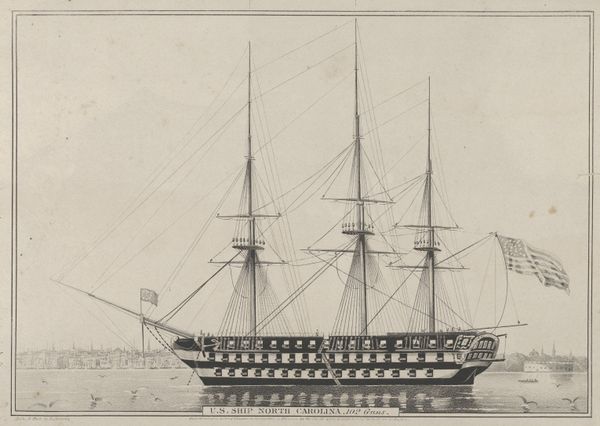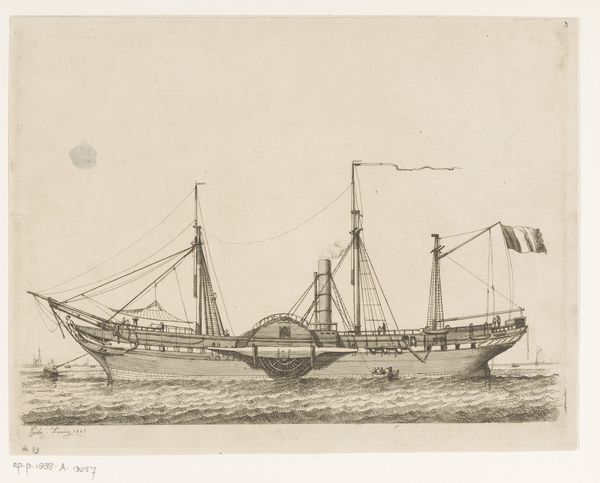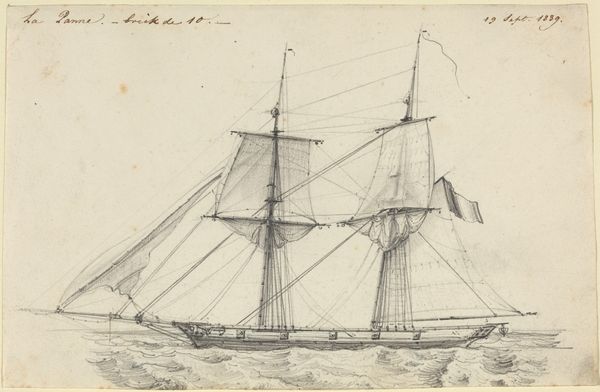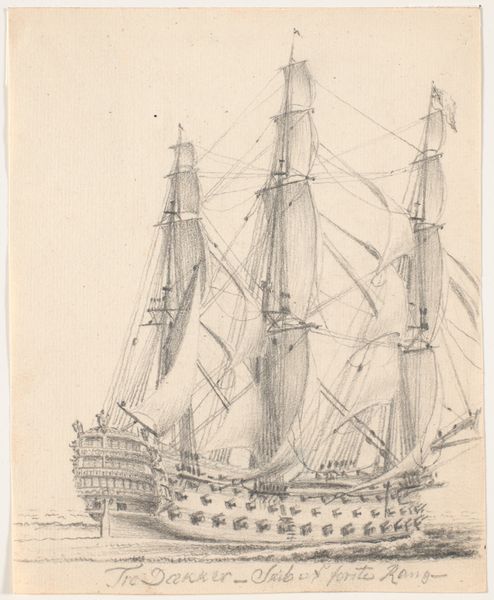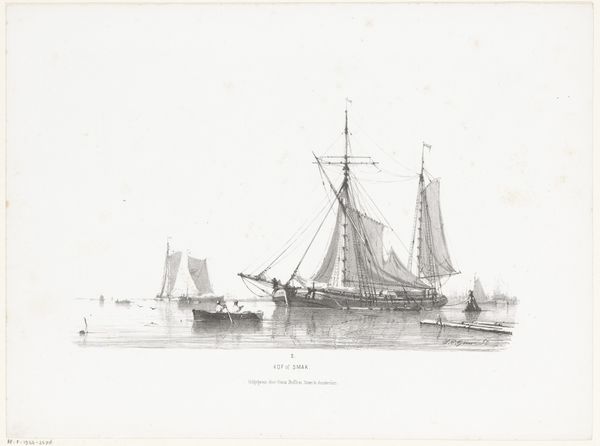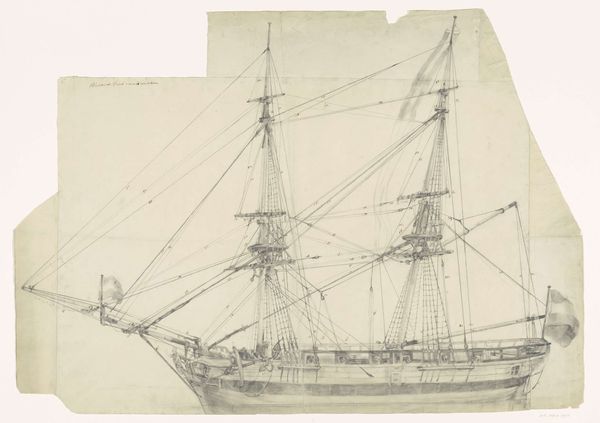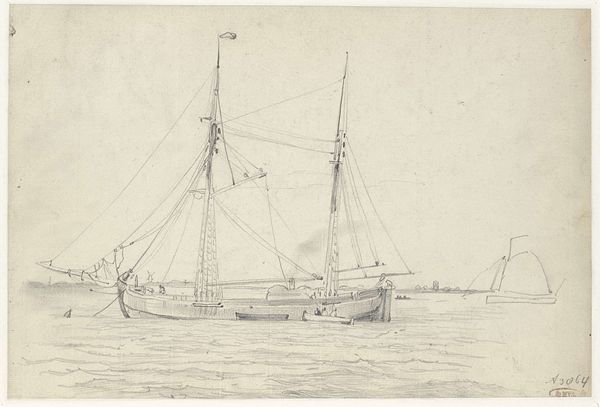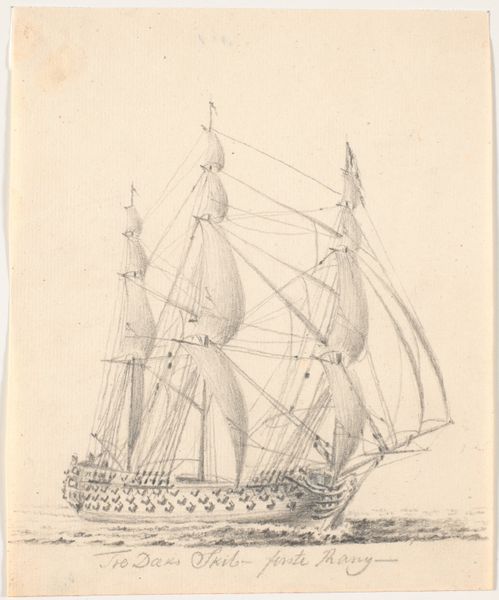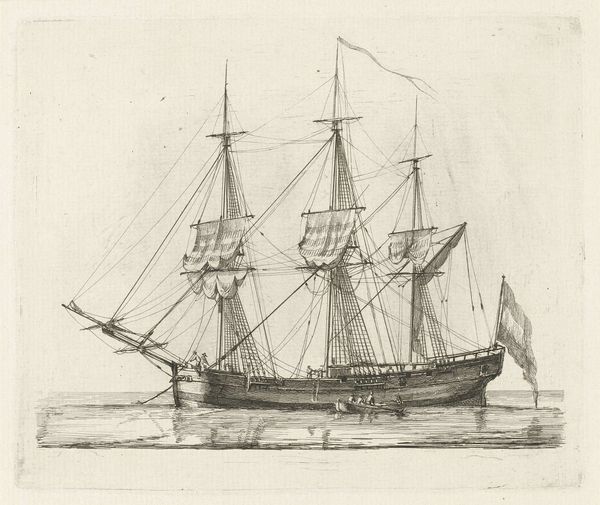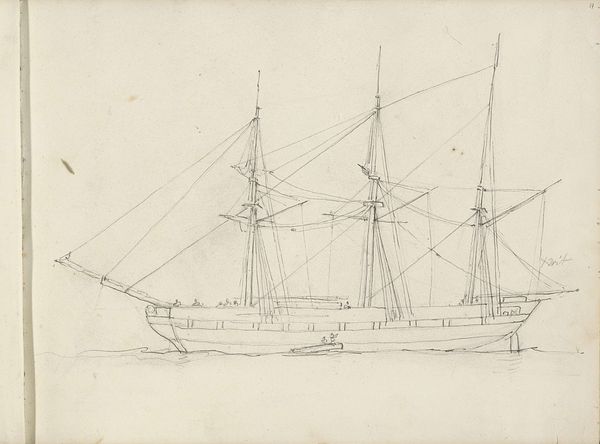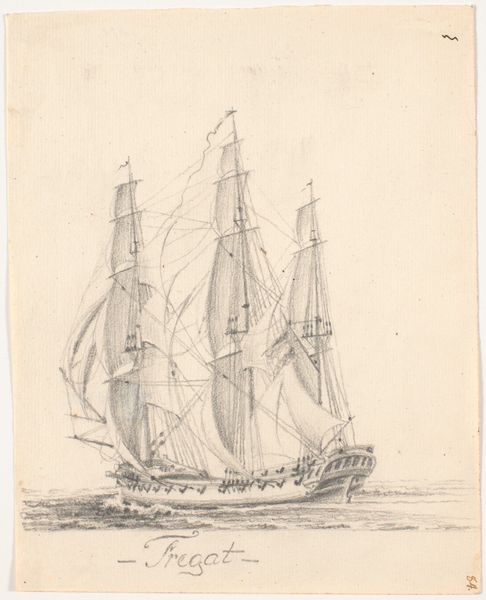
drawing, pencil
pencil drawn
drawing
pencil sketch
landscape
pencil drawing
romanticism
pencil
cityscape
Dimensions: 243 mm (height) x 328 mm (width) (bladmaal)
Editor: This is Anton Melbye's "By a Shipyard. Copenhagen Harbour," a pencil drawing from 1838. It’s so delicate and detailed; you can almost feel the quiet industry of the shipyard. What draws your eye in this piece? Curator: The shipyard is, literally and figuratively, a site of construction. Looking at this drawing, I think of labor, of course. Consider the maritime industry during the 19th century. Who were these laborers? What were their working conditions? Consider Denmark's role in global trade and its relationship to colonialism. Are these ships instruments of commerce or conquest? Melbye, consciously or not, has given us a glimpse into a complex system. Editor: I hadn't really thought about it that way, but the city itself feels secondary, almost like a backdrop to this very active space. So, the focus is really on this industry and the people powering it. Curator: Exactly. And think about how the "Romantic" label often attached to this work sanitizes its social reality. It encourages a focus on picturesque aesthetics rather than the political and economic drivers behind the scene. What’s the function of “Romanticism” in occluding labor, class, and colonialism? Editor: It's interesting to see how something like this, a seemingly simple landscape, can open up so many layers of social and political context when you start questioning it. I’ll never look at a cityscape quite the same way again. Curator: Precisely! The personal is political and the political is aesthetic. The shipyard in Copenhagen reveals Denmark's crucial, yet under-explored, connection with larger international conversations about colonialism, gendered and raced labor, and the history of capitalism. It also reminds us to question and subvert established tropes.
Comments
No comments
Be the first to comment and join the conversation on the ultimate creative platform.
